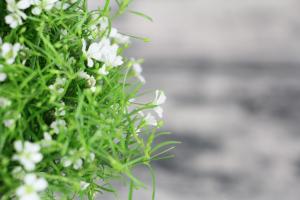When do I Need to Feed my Tomato Plants?
Tomatoes are one of the most beloved crops to grow in a vegetable garden. However, to get the most out of your tomato plants, you need to know when to feed them. A properly fed tomato plant will produce a larger yield of healthier, more flavorful fruits. In this article, we will discuss when you need to feed your tomato plants for maximum growth and productivity.
Before Planting
Before you plant your tomato seedlings, you need to prepare the soil by adding compost. Compost is rich in organic matter that is necessary for healthy plant growth. Add a layer of compost to the soil and work it in with a tiller or garden fork. This will provide your tomato plants with the nutrients they need to get started on the right foot.
During Planting
When planting your tomato seedlings, you should add a slow-release fertilizer to the planting hole. This will give your tomato plants a boost of nutrients to start growing strong roots. Follow the instructions on the fertilizer package for the best results. Be careful not to over-fertilize, as this can lead to burned or stunted plants.
As the Plants Mature
Once your tomato plants have been growing for several weeks, they will start to require more food. At this point, you can start fertilizing them every two to three weeks. Look for a high-quality, water-soluble fertilizer that is specifically formulated for tomatoes. This type of fertilizer will contain the essential nutrients that tomato plants need for growth and fruit production.
Mid-Season Fertilizing
Mid-season is an ideal time to provide your tomato plants with a nutrient boost. This is when your plants will be entering the flowering and fruiting stage, and they will require extra energy to produce larger and more flavorful tomatoes. Use a tomato fertilizer that contains a balanced ratio of nitrogen, phosphorus, and potassium. This will support both foliage growth and fruit production.
Stop Fertilizing Before Harvesting
You should stop fertilizing your tomato plants a few weeks before you plan to harvest your first fruits. This will allow the plants to focus their energy on ripening the fruits, rather than growing more foliage. Over-fertilized tomato plants will continue to produce new growth at the expense of fruit quality and quantity.
In Conclusion
Feeding tomato plants at the right time is essential for growing healthy and productive plants. Begin by preparing the soil with compost, add a slow-release fertilizer during planting, and then switch to a water-soluble tomato fertilizer every two to three weeks. Mid-season is an ideal time for a nutrient boost, but be sure to stop fertilizing a few weeks before harvest to avoid sacrificing the quality and quantity of your tomato crop.

 how many times do yo...
how many times do yo... how many planted tre...
how many planted tre... how many pine trees ...
how many pine trees ... how many pecan trees...
how many pecan trees... how many plants comp...
how many plants comp... how many plants can ...
how many plants can ... how many plants and ...
how many plants and ... how many pepper plan...
how many pepper plan...































